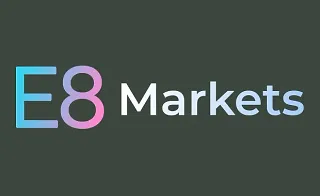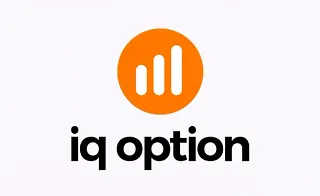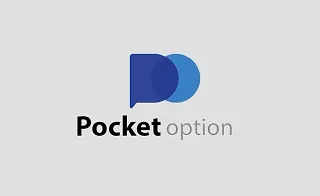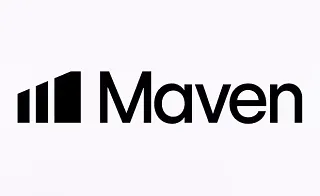The concept of Used Margin in the forex market refers to the portion of a trader's funds that is locked by the broker as collateral for maintaining open positions. A proper understanding of used Margin helps prevent facing margin calls and stop outs.
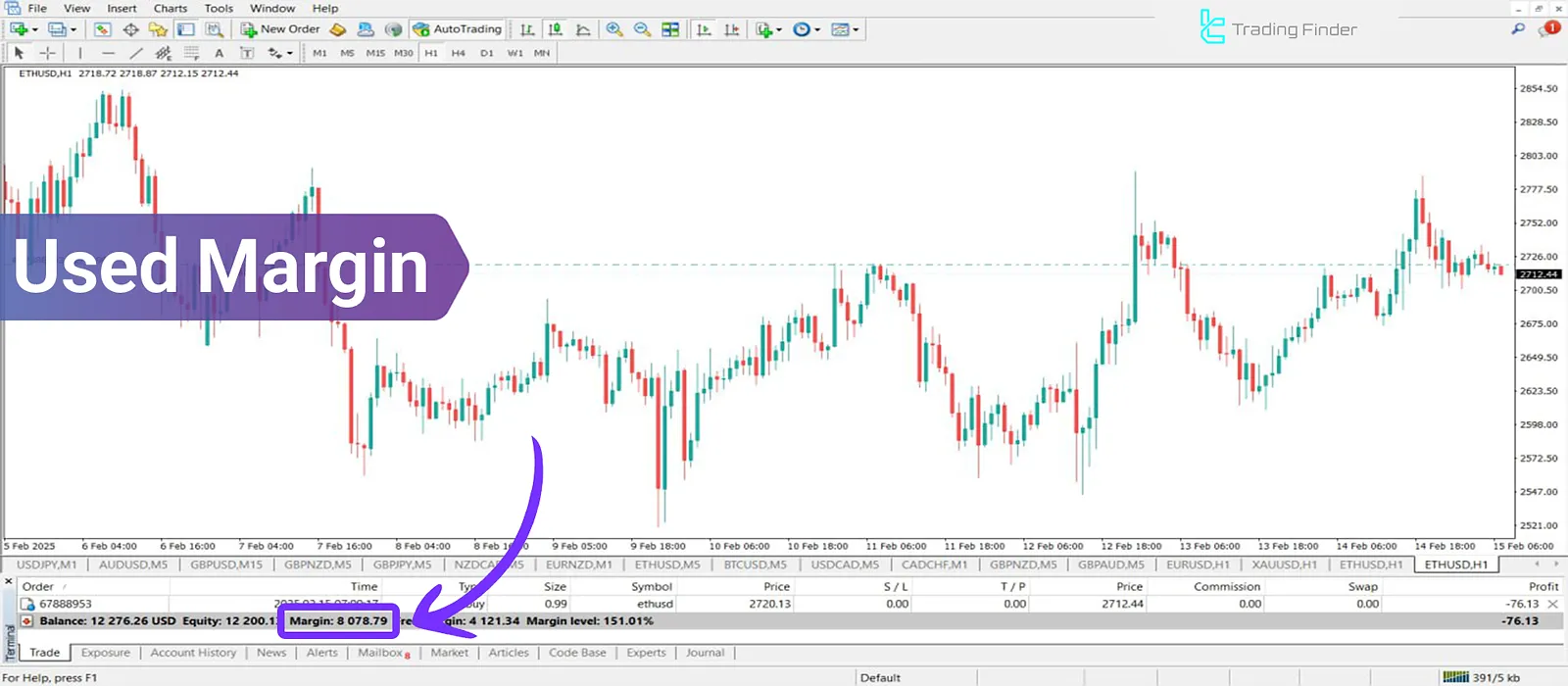
What Is the Used Margin?
Used Margin in Forex represents the total amount of funds subtracted from the account balance to maintain open trades and is held as a guarantee by the broker. This amount determines how much of the account's Equity is available to open new positions.
Difference Between Used Margin and Free Margin
Below is a comparative table between Used Margin and Free Margin:
Parameters | Used Margin | Free Margin |
Definition | The amount of funds required to keep trades open | The remaining balance after deducting the used Margin |
Formula | Total required Margin for all open positions | Account equity minus used Margin |
Role in Trading | Indicates the capital engaged in active trades | Shows the available capital for opening new trades |
Market Volatility Impact | Not directly affected by price fluctuations | Affected by floating profit and loss of open trades |
Usage Purpose | To maintain open positions against market fluctuations | To enter new trades or absorb additional market volatility |
An increase in used margin leads to a decrease in free margin, while a decrease in used margin creates room for opening new trades.
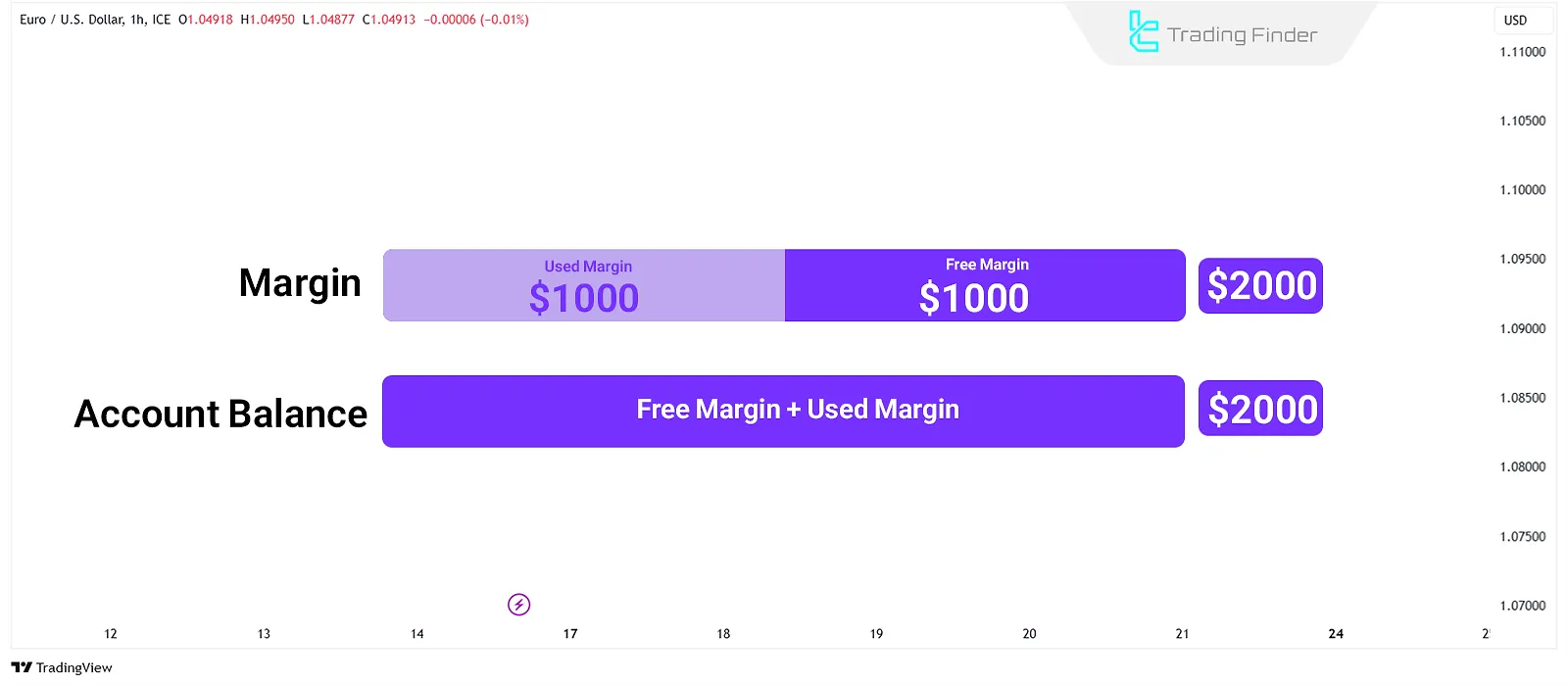
Used Margin Calculation Formula
Used Margin in Forex indicates the portion of the account balance reserved to maintain open positions; this amount remains unavailable until the trades are closed.
Brokers usually determine the required Margin based on trade size and the leverage offered. For each trade, the required Margin is calculated using the following formula:
Example: If a trader has $2,000 in their account and wants to open a trade of 1 mini lot on EUR/USD with 1:20 leverage:
If the trader opens three trades of the same size, the used Margin will be:
Thus, the used Margin is $1,500, and only $500 remains as free Margin.
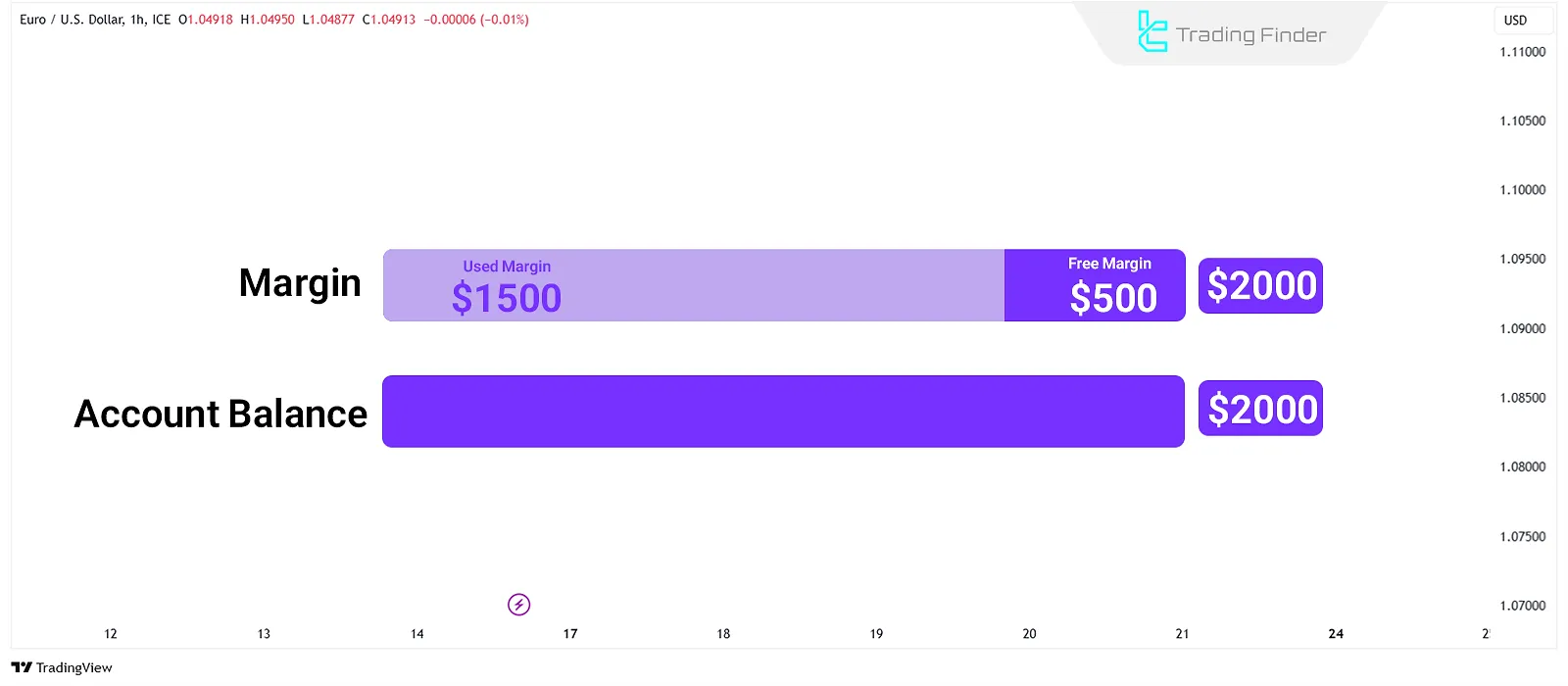
Margin Call and Stop Out in Relation to Used Margin
Managing the level of used Margin in forex is crucial, as it directly impacts the available free Margin and a trader's ability to maintain their positions. If the margin level drops excessively, the trader may face a margin call or even a stop out.
- Margin Call: Occurs when the margin level reaches 100%, meaning the equity is fully utilized as margin. At this point, the trader cannot open new trades;
- Stop Out: This occurs when the margin level falls below a critical threshold (typically 50% or lower), prompting the broker to automatically close some trades to restore the account's margin level.
Example of Margin Call and Stop Out
Suppose in the previous example, the total unrealized loss across the three trades amounts to $500. In this case, the equity drops to $1,500, while the used margin remains at $1,500:
As a result, a margin call is triggered.
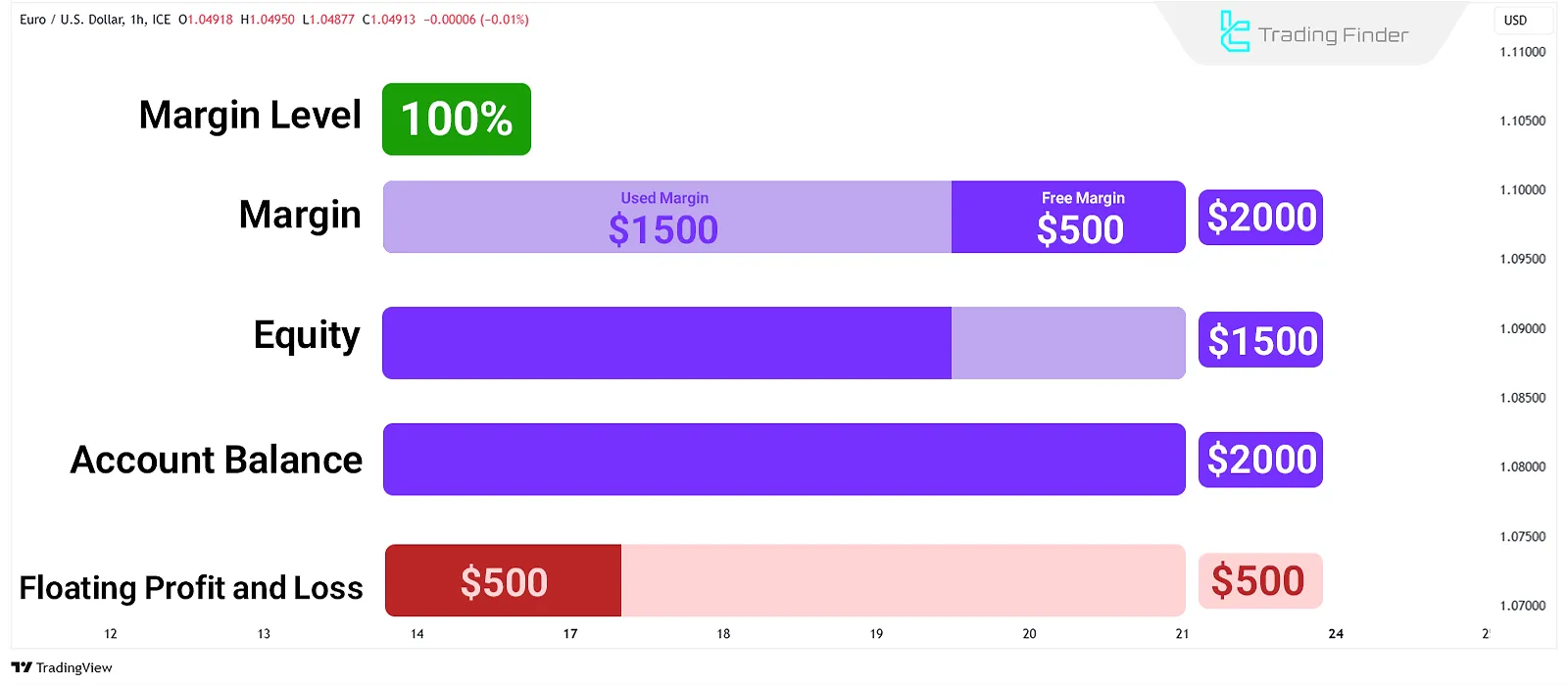
Now, if the unrealized loss increases and the Equity drops to $750:
The broker starts closing positions (stop out).
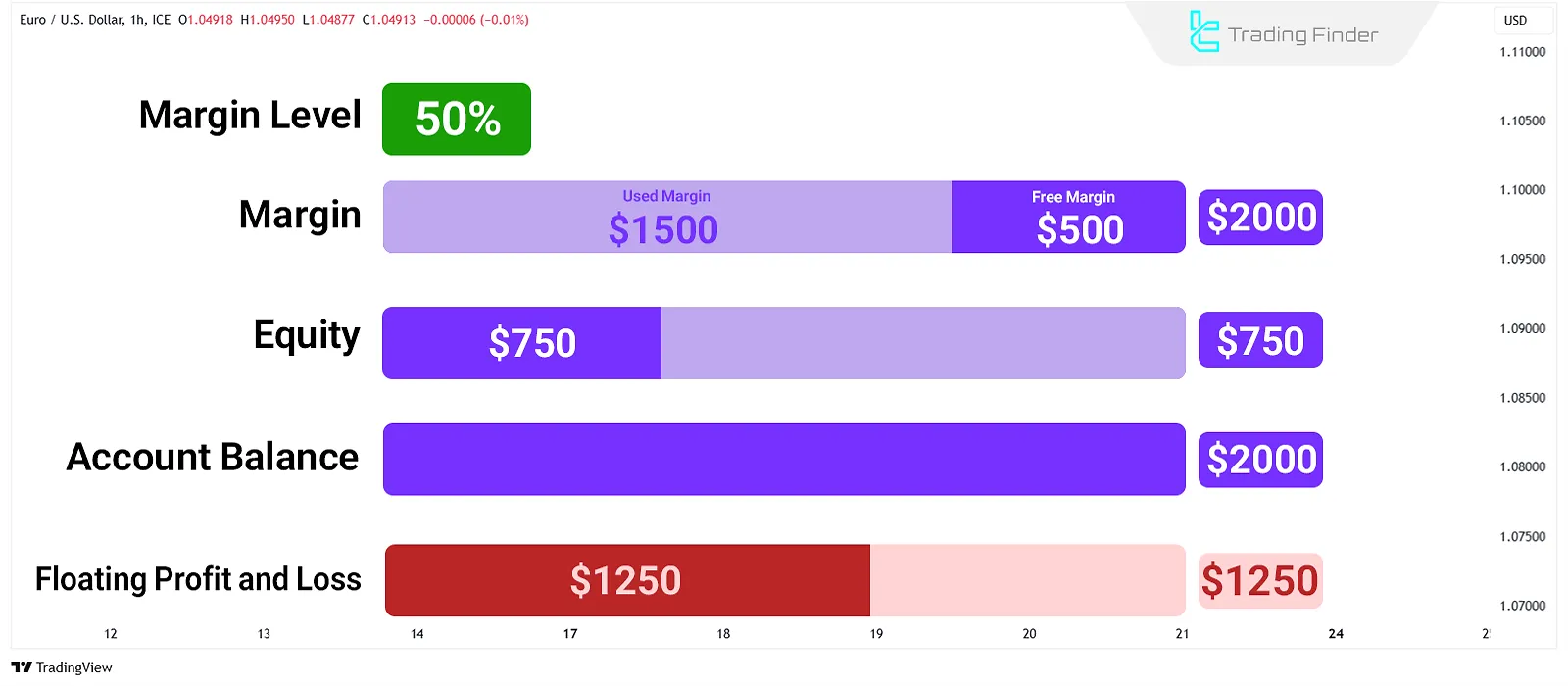
Conclusion
Used Margin and Free Margin are critical indicators for measuring risk and managing positions in forex trading. A proper understanding of used Margin enables traders to avoid margin calls and stop-out scenarios.
Excessively high used Margin reduces account flexibility and exposes the trader to greater risk.
